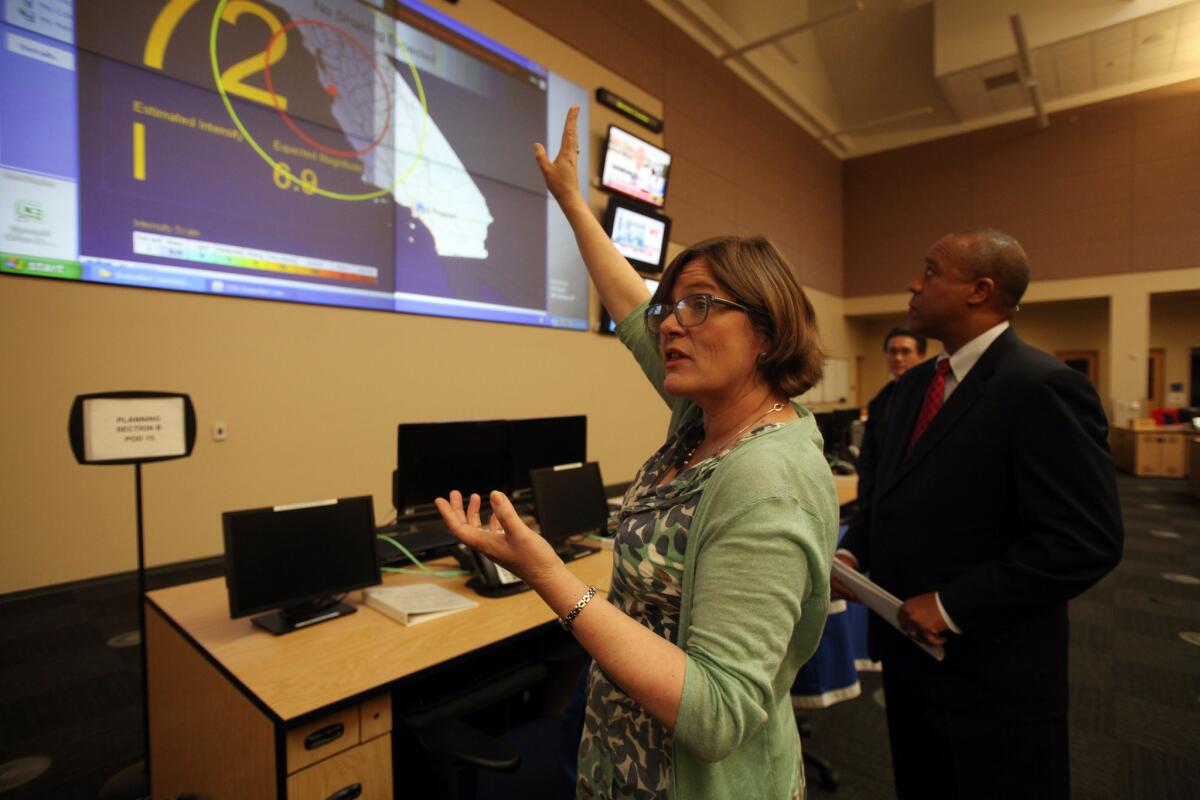Early quake warning system for Southern California gets $5 million

- Share via
Earthquake scientists have received about $5 million to develop an earthquake early warning system for Southern California -- enough to build the network but not enough to operate it.
The money, announced Friday, has enabled scientists to already begin purchasing 100 new sensor stations that will be deployed throughout Southern California to complete the seismic sensor network. But without funds to operate it, it’s like buying a car but not having enough money for gasoline, officials said.
The system could give downtown Los Angeles 40 to 50 seconds of warning that the “Big One” was headed from the San Andreas fault, giving time for elevators to stop at the next floor and open up, firefighters to open up garage doors, high speed trains to slow down to avoid derailment and surgeons to take the scalpel out of a patient.
Los Angeles Mayor Antonio Villaraigosa welcomed the money, which came from funds allocated by the U.S. Department of Homeland Security for local disaster preparedness in the Los Angeles and Long Beach areas. He said Japan’s early warning system gave the Japanese between 10 and 30 seconds of warning before the devastating 9.0 earthquake that struck in March 2011, and “that early warning system actually saved lives.”
It would cost an additional $18 million to complete the network for the rest of California, and $16.5 million a year to operate the system along the West Coast, including Oregon and Washington.
President Obama has requested in his budget that Congress allocate an additional $850,000 a year for the early warning system, a promising first step, officials said, considering the budget cuts imposed by sequestration.
Villaraigosa said he and other local officials would have to be aggressive to communicate to federal officials and Congress how important it is to complete the project. While the technology to create quake early warning systems was largely developed by the U.S. Geological Survey and Caltech in Pasadena, the region has failed to actually develop and build one while other countries, like China, Mexico and Turkey, have done so.
“Communicating to the feds how important it is to make these investments and to the Congress … shouldn’t be as difficult as it is,” Villaraigosa said.
The early warning system would be built using existing U.S. Geological Survey seismic stations. But the system needs to be built more robustly so that it doesn’t fail during a big quake.
USGS seismologist Lucy Jones said the early warning system works because earthquakes travel at the speed of sound; sensors at the epicenter of the quake that initially detect the shaking can send a message faster, at the speed of light, to warn residents farther away that the quake is coming.
“This is a time when good science and a modest investment can really save many lives,” Jones said.
ALSO:
San Francisco passes sweeping seismic retrofit rules
After Boston, LAPD will use undercover cops to patrol events
Boy Scout leaders recommend allowing gay boys into the ranks
Twitter: @ronlin
More to Read
Sign up for Essential California
The most important California stories and recommendations in your inbox every morning.
You may occasionally receive promotional content from the Los Angeles Times.














